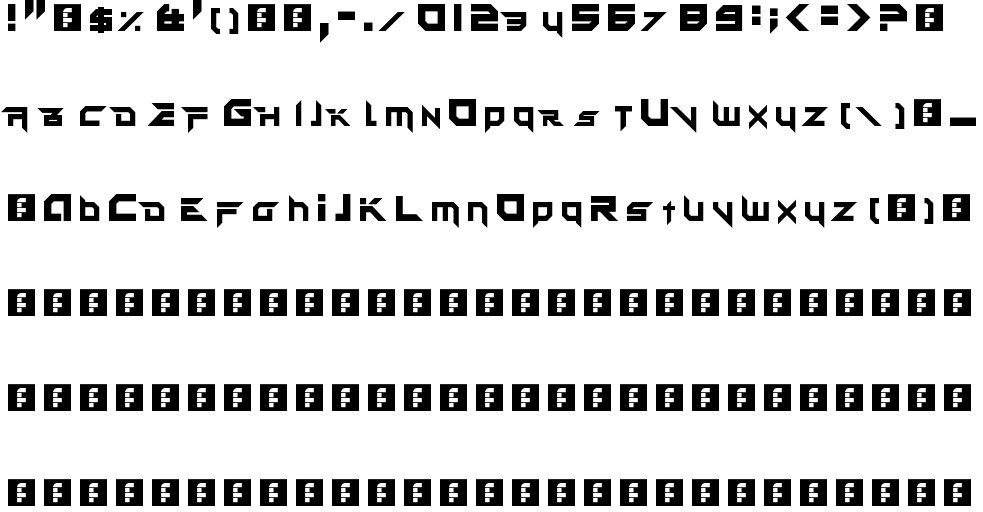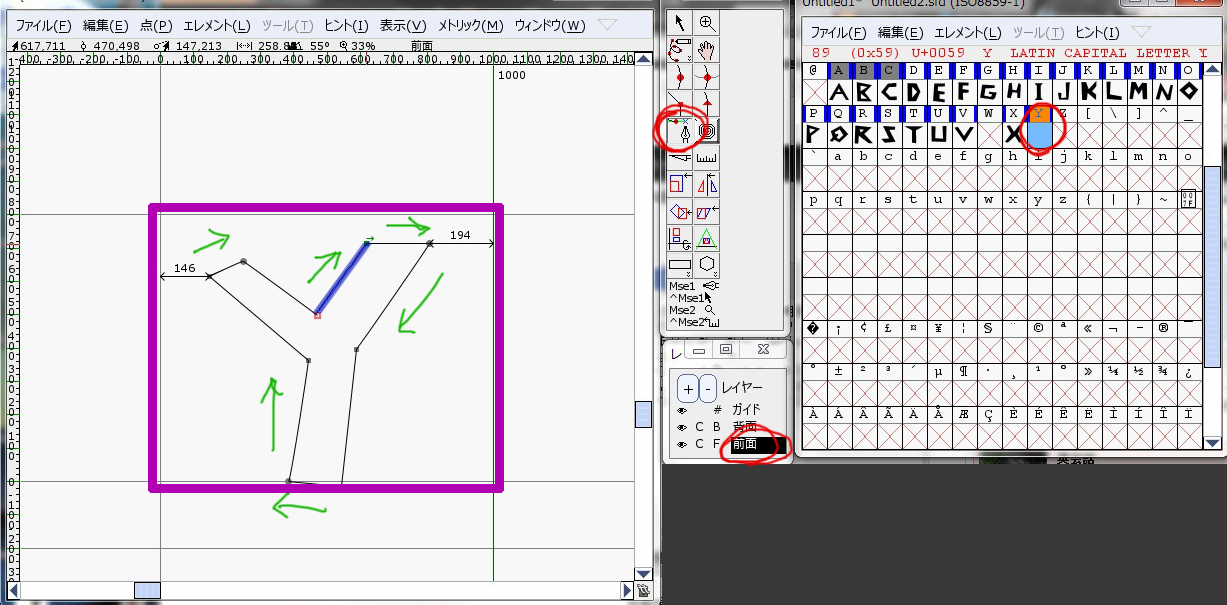
Recently I posted a message on " The Mausoleum Club" forum asking for more information about the BBC's internally developed analogue character generation system ANCHOR. So with all my guides in place on top of my scan, I had an image that looked like this: The final guide I wanted to add was the top of the innermost letter, and that was at 108 pixels up. The most important line in the typeface was the line that threads all the letters together, and I could see this was centred at 40 pixels up, so that was another guide.

So I added two vertical guides at 102 pixels apart. Now I could work out the width of the letter a, which turned out to be 102 pixels. So I created two horizontal guides, 120 pixels apart, then scaled the scan of the font so that the letter a was also 120 pixels tall. So I decided to draw my characters at 120 pixels high in Inkscape as I thought that would mean I would have a good chance that if I did the various elements of the font would sit on nice round numbers. The letter a was 96pt which, on a 90dpi display, is 120 pixels. The first thing I decided to do was base my drawings on the large, clear 96pt letter 'a' at the top right of the scan. In a moment of madness, I decided it might be a nice exercise to try and draw the font myself using my old friends Inkscape and FontForge 2.0. I've noticed that there is a new feature that makes my life a lot easier in Karmic, and that is the font previews you get in the Nautilus file browser.
FONTFORGE MISSING POINTS AT EXTREMA FULL
As you read this I hope to be sat in front of the full release version. Recently I've been testing the Beta and Release Candidates of the latest version of Ubuntu - version 9.10 or "Karmic Koala" as it's known. GNU/Linux is also a natural choice in our household as it's multilingual - it allows us all to run the operating system and applications in whatever language that suits us whenever it suits us.
FONTFORGE MISSING POINTS AT EXTREMA SOFTWARE
I like free software because even though I don't have time to write many programs these days, I like fiddling with software and I like sharing software with my friends, and free software positively encourages you to do both. The first distribution or "distro" of GNU/Linux I ever tried was Ubuntu, and being a huge fan of brown and orange it's the version I'm still using on my computer to this day. I'm a big fan of free software in general and the GNU/Linux operating system in particular. The example below shows both, and the sequence of letters needed to create each string. They can either be used "threaded" with no gaps between them and digits, or they can be used with "capped" ends so that they can be used with spaces. Hopefully you'll appreciate what I did with the plus, minus and equals symbol. This means they may not look very good when used with upper case letters, but I hope what I've done is the best compromise. This includes the vulgar fractions, the currency symbols, the degree sign, the multiply and divide signs and the ordinal indicators. This meant that I made all the symbols that are used mainly in connection with the number glyphs look best when used with the rather small numbers. However, this is easy to fix if you using the font in a tool such as Inkscape.Īnother distinctive feature of the Letraset Oxford typeface is that the numeric glyphs are not full height, but are the same height as the lower case letters. The spacings on the upper case are my best attempt at being as useful as possible, but in some circumstances the kerning won't look right. The spacings on the lower case are the same as on the dry transfer lettering version of the Letraset Oxford face. The only decision then was where to place the cross bar on the A, and though I did toy with making it an extension of the horizontal line that joins up the letters in the end I decided to put it higher up, where I thought it looked best. I used the same angle of slope as the lower case letter v in the original Letraset Oxford face and the same height as the lower case letter letter l.


The first test I did was the upper case A. The font as a whole reminded me of the plastic stencils I used to have as a child which contained what looked like German DIN rounded faces. There were some letters such as B or D where I thought it was pretty clear what an upper case version would look like. Despite worrying what on earth I'd end up with, I fired up Inkscape and decided to have a go. The trouble was that I'd created all the glyphs that had appeared in the original Letraset Oxford face, so if I wanted to add all of the missing glyphs I'd have design them myself - in particular, I'd need to design the whole of the upper case.


 0 kommentar(er)
0 kommentar(er)
